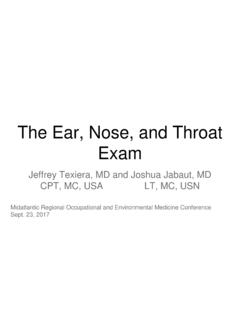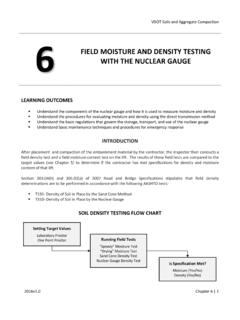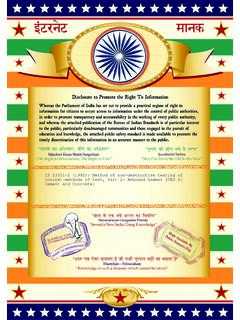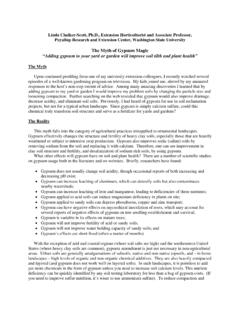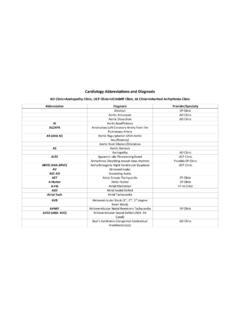Transcription of Cement & Concrete Hazards In Construction
1 Cement & Concrete Hazards In Construction Seth Randall United States Institute of Peace Best Rescue Clark Concrete Contractors LLC Self Perform Division of Clark Construction Group Average 600 field employees topping out at 980 last year Carpenters Laborers Cement Masons Operators In 2012, worked million man-hours Poured 340,140 cubic yards of Concrete 34,014 Concrete trucks full of Concrete 1,360,560 five gallon buckets Topics Hazards Within Cast-In-Place Concrete Concrete Formwork Leading Edge Tower Cranes Overhead Concrete Buckets Working With Concrete Concrete Burns Silica Formwork OSHA (a)(1) State: Formwork shall be designed, fabricated, erected, supported, braced and maintained so that it will be capable of supporting without failure all vertical and lateral loads that may reasonably be anticipated to be applied to the formwork Leading Edge The edge of a floor, roof, or formwork for a floor or other walking/working surface (such as the deck) which changes location as additional floor, roof, decking, or formwork sections are placed or constructed.
2 Considered to be an unprotected side and edge CAZ Multiple Crane Sites Tower Crane Packet 1. Swing radius/site plan. 2. Approved foundation (pad) design with PE stamp. 3. FAA height permit. 4. When required to be tied to a structure, crane tie-in design(s) with PE stamp. 5. Third party inspection records of soil compaction , reinforcing steel, and Concrete testing for crane foundation. 6. Tower crane erection permit (as required by locality). 7. Public space permit (as required by locality for swing). 8. Erection inspection/certification. 9. Daily inspections (visual checks by crane operator). 10. Quarterly Inspections (executed by Clark Tower Crane Crew in the Mid- Atlantic; or by a crane rental company as applicable nationally).
3 11. Annual inspections. 12. Photocopy of Operator's license (as required by locality). 13. Copy of completed critical lift plans and checklists when applicable. Hoisting Concrete Buckets Concrete Burns Sand contained in fresh Concrete is abrasive to bare skin Portland is an alkaline. Strong bases (ph of 12-13) are just as hazardous as strong acids to the skin but have no initial signs of pain such as a burning sensation. Drying Portland is hygroscopic it absorbs water. Portland needs water to harden. The combo of wetness, chemical make-up and abrasiveness can result in Dermatitis (skin inflammation) Silicosis Chronic Silicosis - 15-20 years of moderate to low exposures Accelerated Silicosis - 5-10 years of high exposures Acute Silicosis Months to years of extremely high concentrations Small silica dust particles are inhaled and embed themselves in sacs and ducts in the lungs.
4 The lungs cannot clear them out by mucous or coughing. Bad Method Good Method


